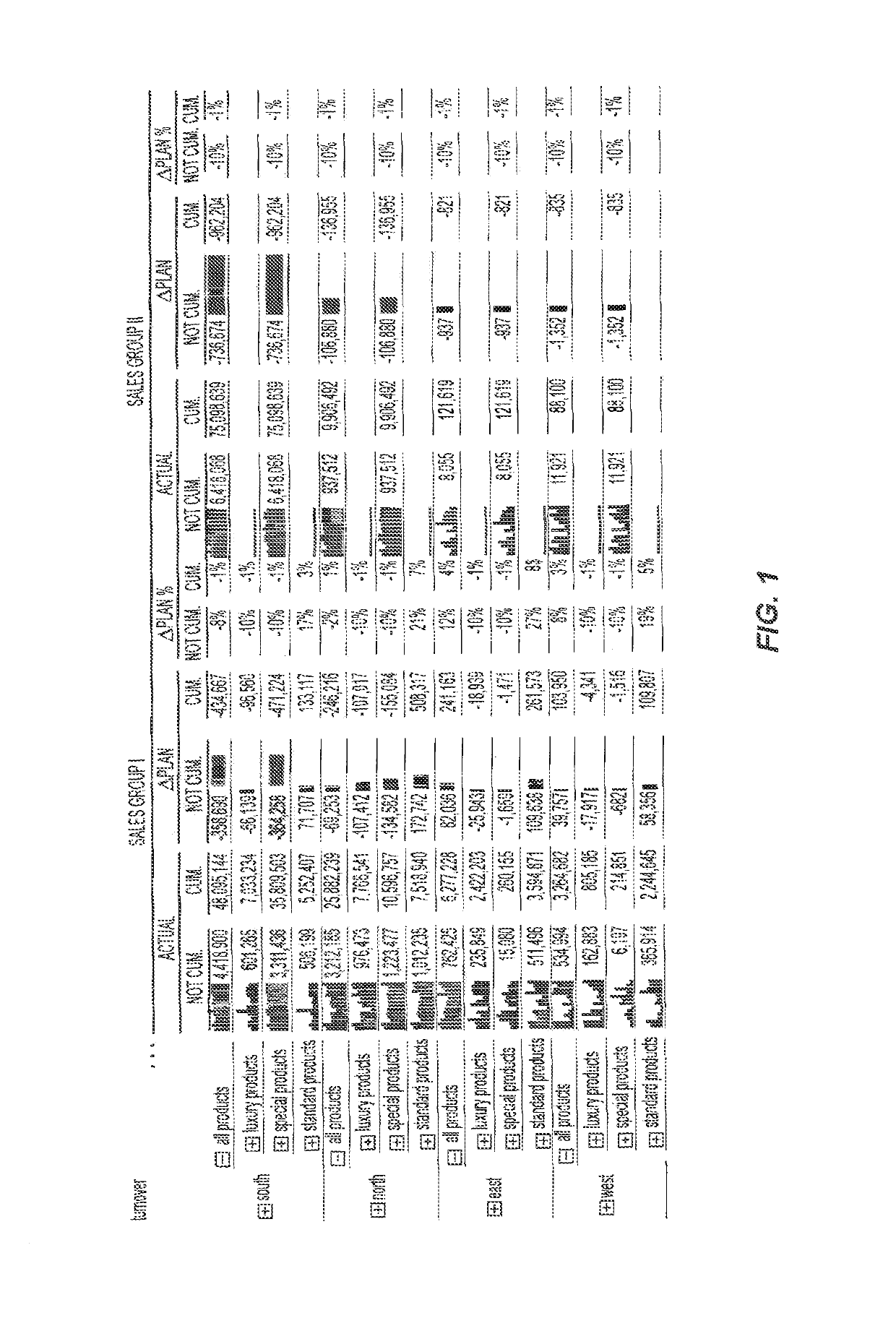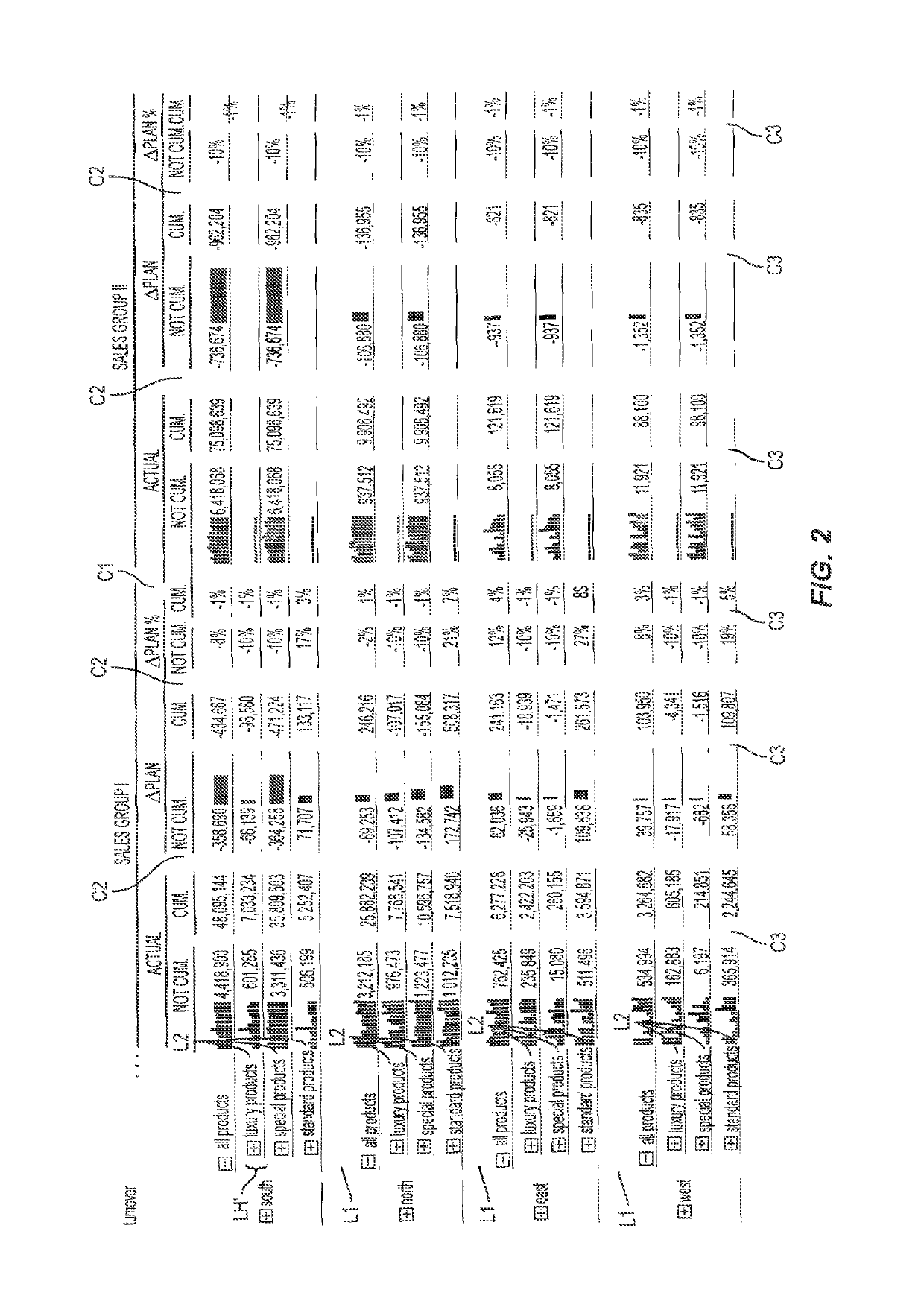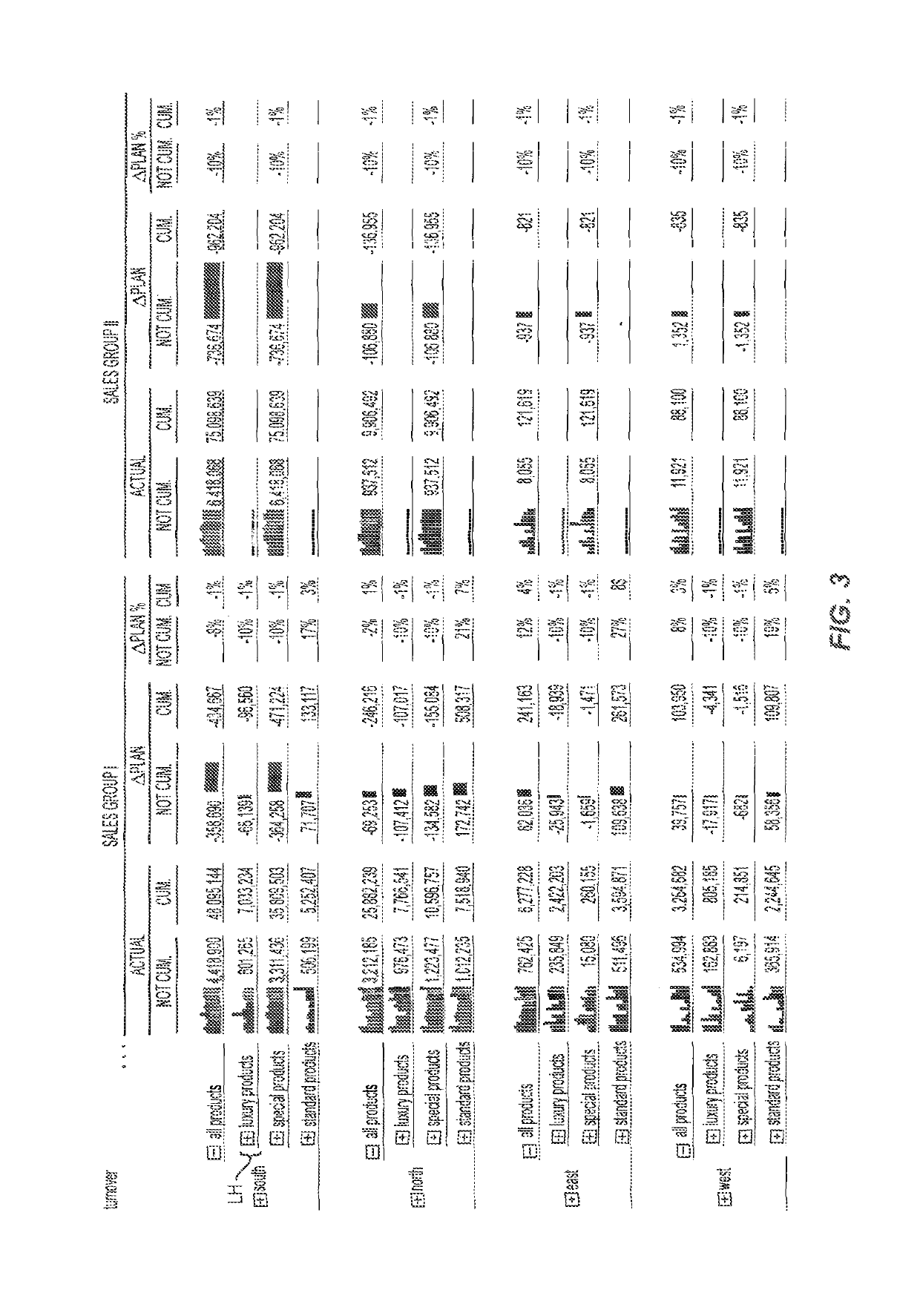System for modifying a table
a table and table technology, applied in the field of systems for modifying tables, can solve problems such as cumbersome methods and difficult to maintain an overview
- Summary
- Abstract
- Description
- Claims
- Application Information
AI Technical Summary
Benefits of technology
Problems solved by technology
Method used
Image
Examples
Embodiment Construction
[0039]Further advantages of the invention are demonstrated in the embodiment according to FIGS. 1 to 5:
[0040]The table shown in FIG. 1 has first categories of the columns which are “sales group I” and “sales group II”. Each of these two first categories are sub-divided into three first sub-categories “actual”, “Δplan” and “\plan %”. Each of these first sub-categories are sub-divided into two second sub-categories “not cum.” and “cum.”.
[0041]As regards the lines of the table there are four first categories “south”, “north”, “east” and “west”. Each of these first categories are sub-divided into four first sub-categories “all products”, “luxury products”, “special products” and “standard products”.
[0042]Thus, the data in the columns are divided into three dimensions (hierarchies) and the data in the lines are divided into two dimensions (hierarchies).
[0043]The values shown in the table reflect turnover numbers as well sparklines showing a development of the turnover over time.
[0044]As ...
PUM
 Login to View More
Login to View More Abstract
Description
Claims
Application Information
 Login to View More
Login to View More - R&D
- Intellectual Property
- Life Sciences
- Materials
- Tech Scout
- Unparalleled Data Quality
- Higher Quality Content
- 60% Fewer Hallucinations
Browse by: Latest US Patents, China's latest patents, Technical Efficacy Thesaurus, Application Domain, Technology Topic, Popular Technical Reports.
© 2025 PatSnap. All rights reserved.Legal|Privacy policy|Modern Slavery Act Transparency Statement|Sitemap|About US| Contact US: help@patsnap.com



